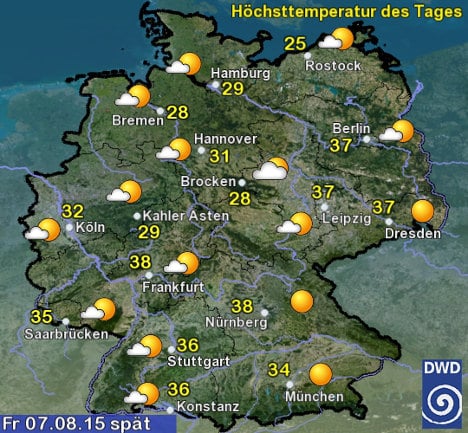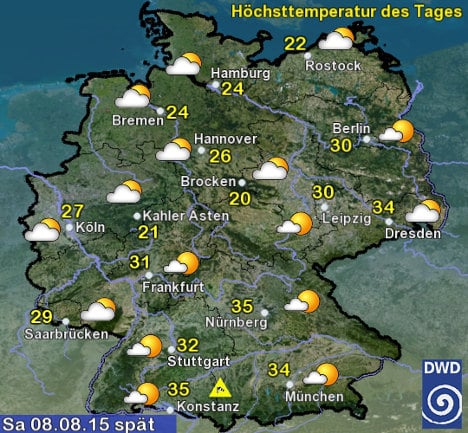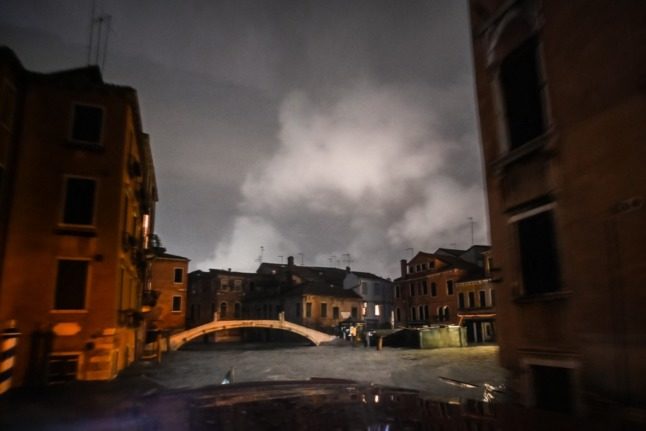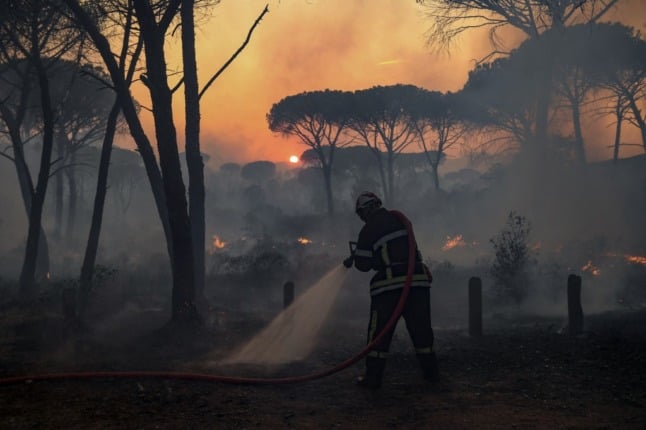While it's unlikely that the all-time highest temperature recorded in Germany – Bavarian Kitzingen's 40.3-degree July 5th this year – it's still a day to make sure you protect yourself against the heat, the German Weather Service (DWD) said.

DON'T MISS: Keep cool and stay safe in the heatwave
Particularly hot areas are likely to be Saxony, the Upper Rhine, the Rhein-Neckar area and the Bergstraße mountain region.
Thursday saw temperatures of 38.7 in Kitzingen, making it once again the warmest place in a country that was sweltering across the board.
Friday evening is likely to see a new front moving in from the West that will cool things down dramatically, bringing heavy rain, gusty winds and possibly even hailstorms.
That will leave Saturday several degrees cooler across the board – although the South is still expected to leave the 30C threshold well behind.





 Please whitelist us to continue reading.
Please whitelist us to continue reading.
Member comments